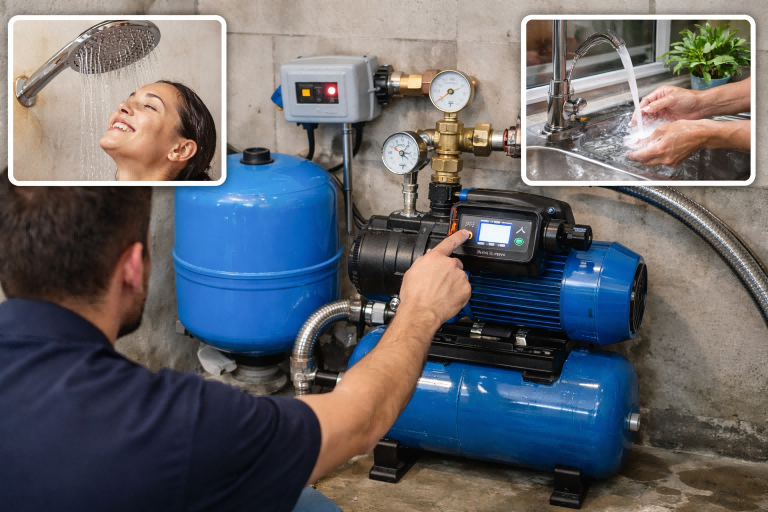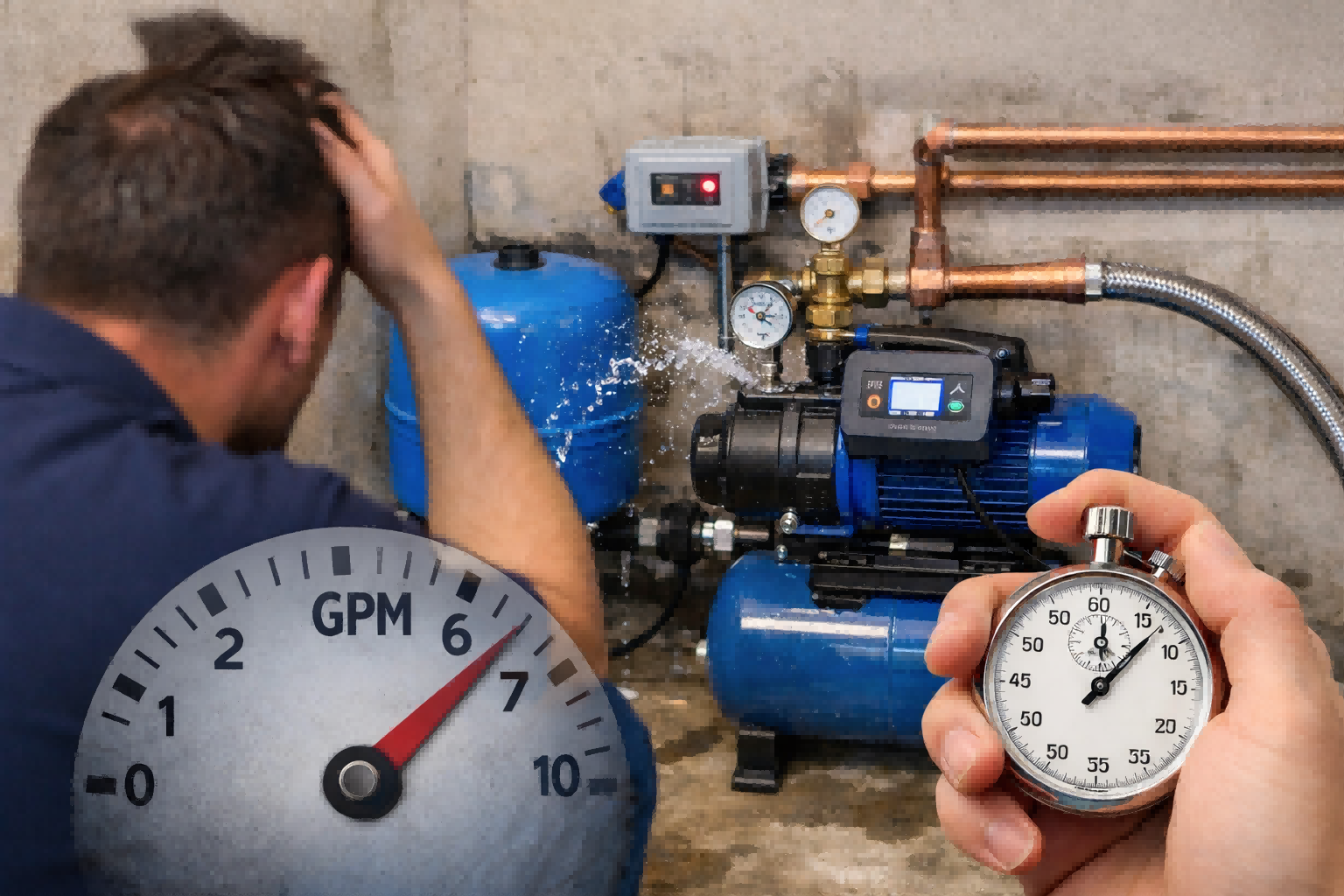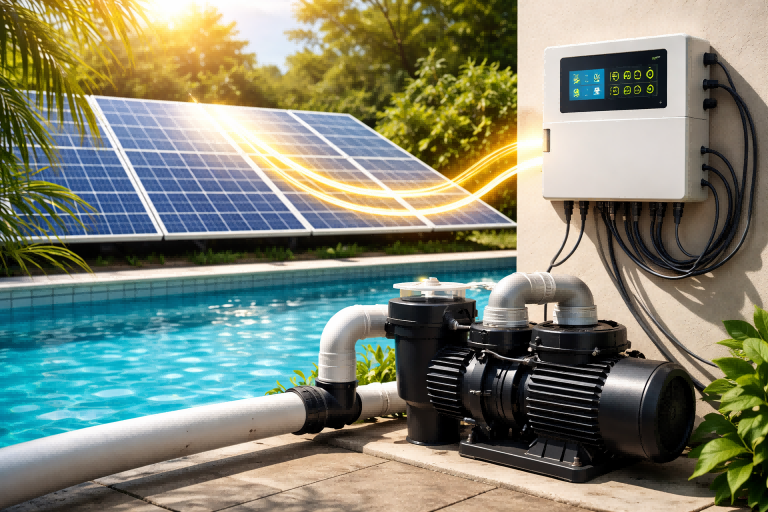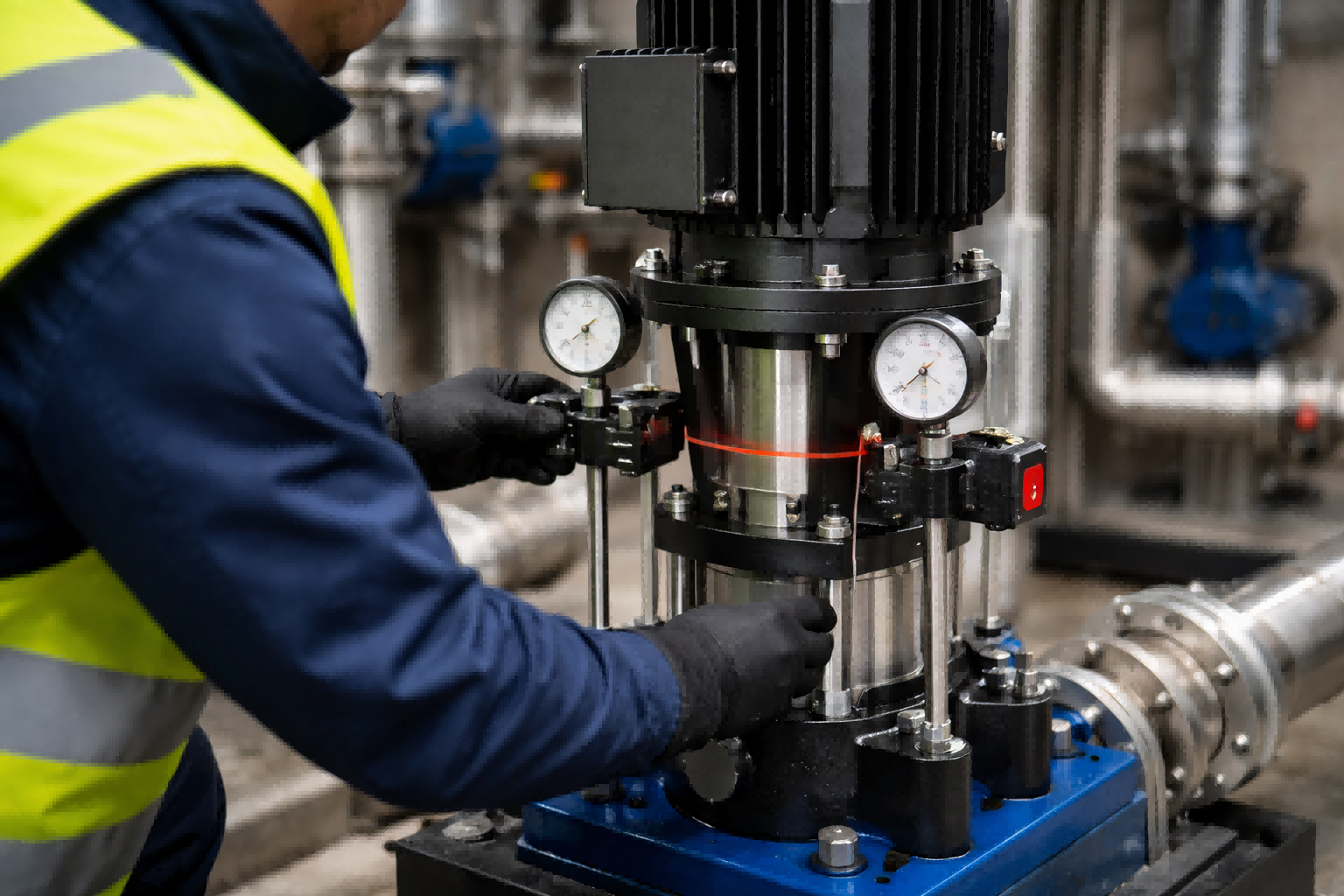Struggling with unreliable water access?
A hand pump well can seem like a simple solution, but its limitations can lead to frustration.
Understanding these limits is the first step to securing a truly dependable water supply.
Theoretically, a hand pump can draw water from a maximum depth of about 33.9 feet (10.3 meters) at sea level. However, in real-world applications, the practical and reliable maximum suction depth is much less, typically around 22 to 25 feet (approximately 6.7 to 7.6 meters).
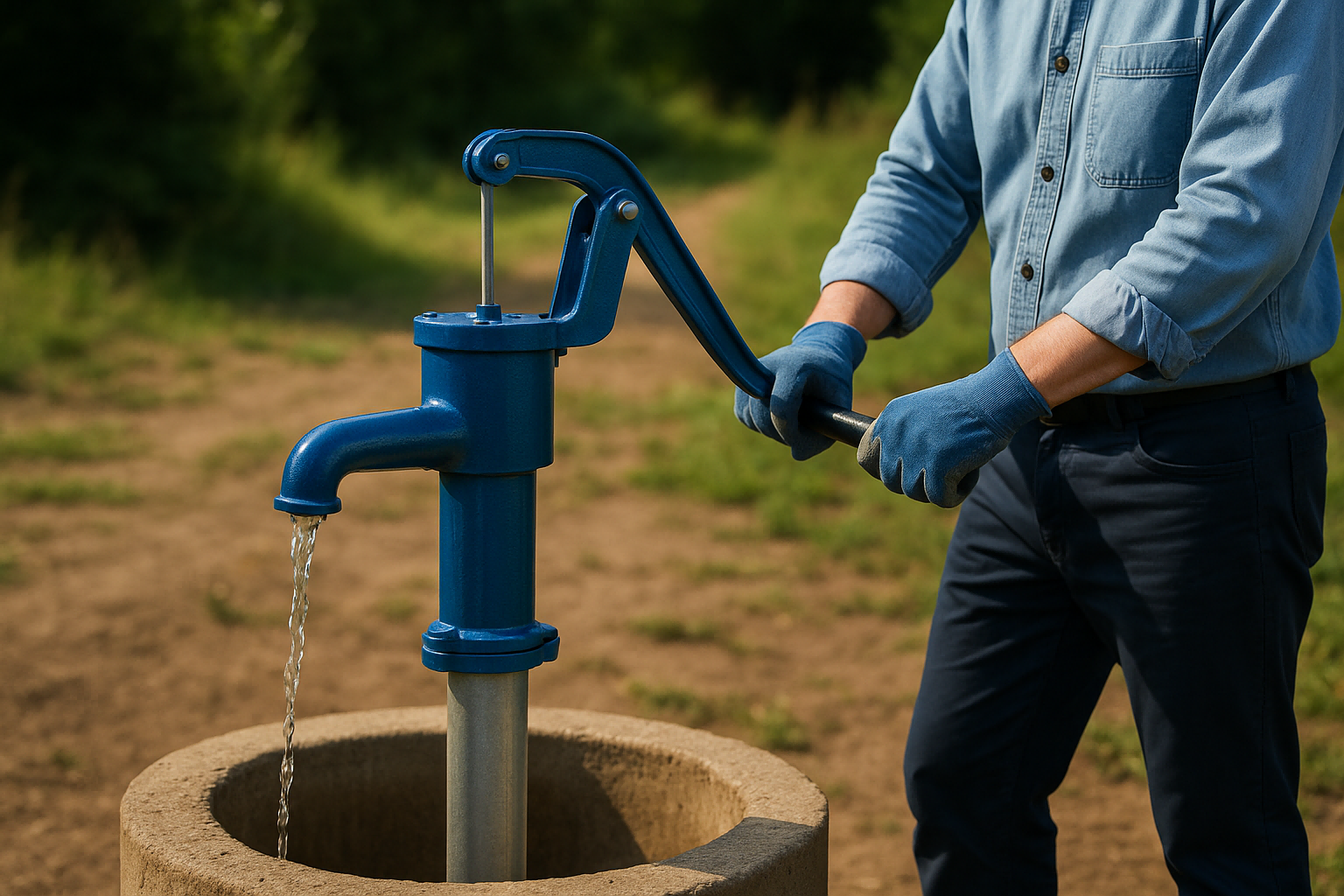
Now that you know the general limit, you might wonder why this specific number exists.
It’s not an arbitrary figure set by manufacturers.
It's a hard limit dictated by the laws of physics.
Understanding this science is crucial for anyone in the water solutions business, as it helps explain why certain pumps are suitable for specific jobs.
It allows you to guide your customers with confidence, ensuring they get a system that actually works for their needs, rather than one that is doomed to fail.
Let's explore the forces at play and the factors that can change this number.
What Is the Science Behind a Hand Pump's Suction Lift?
Have you ever tried to explain why a pump "sucks" water up, only to get tangled in the details?
This complex science can be difficult for customers to grasp.
Mastering the explanation builds credibility and trust.
A hand pump doesn't actually "suck" water up. Instead, it works by removing air from the pipe, creating a partial vacuum. The higher atmospheric pressure outside then pushes the water up into the pipe to fill the space. This is why its lifting ability is limited by atmospheric pressure.
To truly grasp this concept, we need to dive deeper into the physics.
It’s a simple yet powerful principle that governs all suction pumps, from the simplest hand pump to more complex systems.
Understanding this will Leta you not just sell pumps but also provide expert consultation.
The Role of Atmospheric Pressure
The Earth's atmosphere exerts pressure on everything on its surface.
At sea level, this pressure is approximately 14.7 pounds per square inch (PSI), or 1 atmosphere (atm).
This is the force that a hand pump leverages.
When you operate the pump handle, a piston inside the cylinder moves.
On the upstroke, the piston creates a space with lower pressure—a partial vacuum—inside the drop pipe that goes down into the well.
Because the water in the well is under the full pressure of the atmosphere, this pressure difference causes the water to be pushed upward into the pipe.
The Theoretical Maximum Lift
Imagine a perfect vacuum, where all air is removed from the pipe.
In this ideal scenario, the atmospheric pressure would be able to support a column of water up to a certain height.
This height is the theoretical maximum suction lift.
At sea level, this is calculated to be about 33.9 feet or 10.3 meters.
No matter how powerful your suction pump is, it cannot lift water higher than this just by using suction, because that's the absolute limit of what atmospheric pressure can do.
| Unit of Pressure | Equivalent Water Column Height |
|---|---|
| 14.7 PSI | ~33.9 Feet |
| 1 atm | ~10.3 Meters |
| 101.3 kPa | ~10.3 Meters |
Why Pumps Don't "Suck"
The common term "suction" is a bit misleading.
Nothing is actually being pulled up.
It's all about pushing.
Think of it like drinking from a straw.
You lower the pressure in your mouth, and the atmospheric pressure on the surface of your drink pushes the liquid up the straw.
A hand pump does the exact same thing on a larger scale.
This fundamental principle is the key takeaway for explaining pump limitations to your clients.
What Factors Limit a Hand Pump's Practical Suction Depth?
Are your customers frustrated when their new pump underperforms?
It's often because the "on-the-box" specifications don't match real-world conditions.
Knowing the hidden factors that reduce performance makes you a more effective problem-solver.
The practical suction depth of a hand pump is reduced from the theoretical 33.9 feet by several factors. The most significant are friction loss within the pipes, the mechanical inefficiency of the pump itself, and lower atmospheric pressure at higher altitudes.
Understanding these variables is the difference between a successful installation and a costly failure.
For a distributor, this knowledge is invaluable.
It allows for accurate site assessments and realistic promises to clients, cementing your reputation as a reliable expert.
Knowing these details ensures that the systems you design and sell will function correctly under the customer's specific environmental conditions.
Let's break down each of these limiting factors in more detail.
Friction Loss
Water is not weightless, and it doesn't move without resistance.
As water flows through the drop pipe, it rubs against the inner walls.
This creates friction, which works against the force of atmospheric pressure.
The effect of friction loss depends on several things:
- Pipe Diameter: A narrower pipe causes more friction for the same flow rate.
- Pipe Length: The longer the pipe, the more total friction is generated.
- Flow Rate: Pumping faster increases friction significantly.
- Pipe Material: Rougher pipe interiors (like old iron pipes) create more friction than smooth PVC.
Even bends, fittings, and valves add to the total friction loss.
This energy loss must be subtracted from the total available lift from atmospheric pressure, directly reducing the maximum depth you can pump from.
Pump Efficiency
No machine is 100% efficient.
Hand pumps are no exception.
The seals on the piston and the check valves at the bottom are not perfect.
Minor leaks are inevitable.
Each time the piston moves, a small amount of air might leak back into the cylinder, or water might slip past the seals.
This inefficiency means the pump can't create a perfect vacuum, reducing the pressure difference it can achieve.
An older, worn-out pump will be much less efficient than a brand-new one, further lowering its practical suction depth.
Altitude
This is a critical, often overlooked factor.
Atmospheric pressure decreases as you go higher above sea level.
There is simply less air stacked on top of you to create pressure.
As a general rule, you lose about 1 foot of theoretical suction lift for every 1,000 feet you go up in elevation.
| Altitude (above sea level) | Approximate Atmospheric Pressure | Theoretical Suction Lift | Practical Suction Lift (approx.) |
|---|---|---|---|
| 0 ft (Sea Level) | 14.7 PSI | 33.9 ft | 25 ft |
| 2,000 ft | 13.7 PSI | 31.7 ft | 23 ft |
| 5,000 ft | 12.2 PSI | 28.2 ft | 20 ft |
| 8,000 ft | 10.9 PSI | 25.2 ft | 17 ft |
A customer in a mountainous region will have a much lower practical suction limit than one at the coast.
Failing to account for altitude is a common reason for pump system failures in these areas.
Water Temperature and Vapor Pressure
Another subtle factor is the water's temperature.
Warmer water evaporates more easily.
This means that as you lower the pressure in the pipe, some of the water will turn into water vapor (steam).
This vapor fills the vacuum you are trying to create, counteracting the suction effect.
This phenomenon is known as cavitation and it can damage the pump and severely limit its ability to lift water.
While less of a concern in most cold groundwater situations, it can be a factor in warmer climates or with surface water sources.
How Do Different Types of Hand Pumps Compare in Depth?
Does your product catalog cause confusion between shallow and deep well pumps?
Selling the wrong type for the job leads to dissatisfied customers and difficult returns.
Clarifying the difference is key to guiding your clients to the right purchase.
Shallow well hand pumps are suction pumps limited to a practical depth of about 25 feet. Deep well hand pumps are not suction pumps; they use a cylinder and rods to physically lift water from much greater depths, often hundreds of feet, bypassing suction limits.
The distinction between these two systems is fundamental.
It's not just a minor variation; it's a completely different mechanical principle.
For a distributor, being able to clearly explain this difference is essential.
It allows you to instantly qualify a customer's needs based on their water table depth and ensures you recommend a product that is physically capable of doing the job.
Let's look at how each type operates.
Shallow Well Pumps (Suction Pumps)
These are the classic hand pumps most people picture.
All the mechanical parts, including the piston and cylinder, are located above ground within the pump body itself.
A single pipe, the drop pipe, extends down into the water.
- How They Work: They operate on the suction principle we've discussed. The pump creates a vacuum, and atmospheric pressure pushes the water up.
- Depth Limit: They are strictly bound by the ~25-foot practical suction limit. They are physically incapable of drawing water from deeper than this.
- Common Use Cases: Ideal for wells, cisterns, or surface water sources where the water level is consistently high and never drops below 25 feet from the pump.
Deep Well Hand Pumps (Lift Pumps)
These pumps look similar on the outside but are engineered very differently.
They are not limited by atmospheric pressure because they don't use suction to lift the water over the entire distance.
- How They Work: The pumping mechanism, a sealed cylinder with a piston and check valves, is located down in the well, submerged below the water level. A long "pump rod" connects the handle above ground to the piston deep in the well. When you move the handle, you are physically lifting the rod, which in turn lifts a column of water up the pipe. Each stroke lifts the column of water a little higher until it comes out of the spout.
- Depth Limit: The limit is determined by the strength of the components (the pump rod and handle) and the physical strength of the person operating it. They can easily be used for depths of 100, 200, or even over 300 feet.
- Comparison:
| Feature | Shallow Well Pump (Suction) | Deep Well Pump (Lift) |
|---|---|---|
| Principle | Atmospheric pressure pushing water up | Mechanical force lifting water |
| Cylinder Location | Above ground in pump body | Below water level in the well |
| Max Depth | ~25 feet (7.6 m) | 300+ feet (90+ m) |
| Key Component | Single drop pipe | Drop pipe + internal pump rod |
| Limitation | Physics (atmospheric pressure) | Mechanical strength & human effort |
Understanding this key difference prevents the most common and critical error in hand pump selection: trying to use a suction pump for a deep well application.
When Is a Hand Pump Not the Right Solution?
Are your clients demanding more than a hand pump can deliver?
Trying to push a simple tool beyond its limits leads to frustration and a search for better technology.
Recognizing this moment is an opportunity to introduce a superior solution.
A hand pump is not the right solution when the demand for water exceeds manual labor, when a consistent and automated pressure is required, or when the water source is too deep for practical hand pumping. They are solutions for basic access, not modern convenience.
For a business-minded distributor like yourself, this is a pivotal conversation.
Your customer has outgrown a basic solution.
This is the perfect entry point to discuss the vast improvements offered by modern, powered pump systems.
It’s about transitioning the conversation from solving a simple problem (getting water out of a hole) to meeting a complex need (on-demand, pressurized water for a whole property).
Let's pinpoint the specific scenarios where a hand pump falls short.
The Demand for Volume and Pressure
Hand pumps deliver a relatively small amount of water with each stroke.
They are fine for filling a bucket or getting a drink, but they are completely impractical for modern household or commercial needs.
- Household Use: You cannot run a shower, a washing machine, or a dishwasher with a hand pump. The flow rate is far too low.
- Irrigation: Watering a small garden is tedious; watering a commercial crop is impossible.
- Pressure: Hand pumps do not create stored pressure. Water only flows when you are actively pumping. Modern plumbing requires a constant, steady pressure to function correctly. You can't just connect a hand pump to your house's plumbing and expect it to work.
The Need for Automation and Convenience
The defining feature of a hand pump is manual labor.
In an age of automation, this is a significant drawback for many applications.
- Effort: Pumping from even a moderate depth requires physical effort. For deep wells, this can be exhausting. This is not a viable solution for elderly users, large families, or any application requiring frequent water use.
- On-Demand Access: With a hand pump, water is not instantly available. You must go to the pump and work for it. A modern system delivers water at the turn of a faucet, providing a level of convenience that is now considered standard.
Challenges with Water Source and Quality
Hand pumps also have limitations related to the water source itself.
- Deep Water Tables: As we've discussed, if the water table drops below 25 feet, a standard shallow well suction pump becomes useless. While a deep well hand pump can work, the effort required increases dramatically with depth.
- Water Treatment: Integrating water treatment systems (like softeners or UV purifiers) with a hand pump is difficult. Modern powered systems are designed to work seamlessly with these components, ensuring the water is not only available but also safe and high-quality.
In all these cases, the user's needs have surpassed the capabilities of manual pump technology.
This is the clear signal that it's time to introduce them to the next level of water management: powered, intelligent pump systems.
The Modern Alternative: Overcoming Traditional Pump Limitations
Is your client ready to move past the limitations of manual pumps?
They are looking for a solution that offers power, consistency, and efficiency.
This is your chance to introduce the technology that defines modern water systems.
Modern Variable Speed Drive (VSD) booster pumps solve every problem of a hand pump. They provide high-volume, constant, adjustable water pressure automatically and on-demand. They are energy-efficient, quiet, and can draw water from great depths, integrating seamlessly with modern buildings.
As a representative of RAFSUN, this is where your expertise truly shines.
You're not just selling a pump; you're offering a comprehensive upgrade to your client's entire water infrastructure.
You are providing a solution that delivers performance, saves money, and offers the reliability that businesses and modern households demand.
A hand pump gets you water.
A RAFSUN VSD booster pump system manages your water.
Let's explore the specific advantages.
Constant Pressure, Unmatched Convenience
The single greatest advantage is constant, stable water pressure.
A VSD pump uses an intelligent controller to monitor the pressure in the system.
When a tap is opened, the pump instantly speeds up to maintain the exact pressure setting.
When the tap is closed, it slows down or stops.
- User Experience: This means no more weak showers or fluctuating flow when multiple appliances are running. It's the seamless experience everyone expects from a modern water system.
- System Protection: By avoiding the sudden starts and stops of traditional pumps, VSD technology reduces mechanical stress on pipes and fixtures, preventing water hammer and extending the life of the entire plumbing system.
Unlocking Significant Energy Savings
A traditional pump operates at one speed: 100% full power, every time it turns on.
This is incredibly inefficient, like flooring the gas pedal every time you start your car, even just to move a few feet.
A RAFSUN VSD booster pump is different.
By adjusting its speed to the exact demand, it uses only the energy that is needed.
| Pump Type | Energy Usage Characteristic | Potential Savings |
|---|---|---|
| Traditional Fixed-Speed Pump | Runs at 100% power for any demand. High startup current. | Baseline |
| RAFSUN VSD Booster Pump | Varies motor speed to match flow. No power surges. | Up to 50% or more |
For your clients—importers and distributors—this is a powerful selling point.
Offering a product that can cut their customers' electricity bills in half provides a massive competitive advantage.
Quiet Operation and Long-Term Reliability
The "soft start" nature of VSD pumps means they are significantly quieter than conventional pumps that slam on and off.
This is a major quality-of-life improvement, especially for residential and commercial buildings.
Furthermore, the reduced mechanical stress translates directly to a longer equipment lifespan.
- Reduced Wear: Less vibration and fewer hard starts mean less wear on motor bearings, seals, and pump components.
- Lower Maintenance: A more reliable system means fewer service calls and lower lifetime ownership costs for the end-user.
For your business, this means happier customers and a reputation for providing high-quality, durable solutions.
By understanding the absolute limits of old technology like hand pumps, you can more effectively articulate the immense value of modern solutions like RAFSUN's intelligent VSD pumps.
You are equipped to guide your clients from a world of manual labor and limitations to one of automated, efficient, and powerful water management.
Conclusion
A hand pump's reach is limited by physics to about 25 feet.
For modern needs, VSD booster pumps offer the superior, efficient, and automated solution your clients demand.
FAQs
1. What is the difference between a shallow well and a deep well hand pump?
A shallow well pump uses suction and is limited to about 25 feet. A deep well pump uses a rod to mechanically lift water from much deeper.
2. Can a hand pump get water from 50 feet?
Yes, but only a deep well hand pump can. A standard shallow well suction pump cannot draw water from that depth under any circumstances.
3. How much water can a hand pump pump?
This varies widely, but a typical hand pump might produce 3-5 gallons per minute with steady effort. This is much less than a powered pump.
4. Do hand pumps still have a use today?
Absolutely. They are excellent, reliable solutions for off-grid locations, emergency backup water sources, or for simple applications where pressurized water is not needed.
5. Does altitude affect a deep well hand pump?
It does not affect its ability to lift water since it doesn't rely on atmospheric pressure. However, the physical effort required may feel harder at high altitudes.
6. How do I maintain a hand pump?
Primary maintenance involves periodically replacing the leather or rubber seals on the piston and check valves, which can wear out over time, reducing efficiency.
7. Can I connect a hand pump to my house?
No. A hand pump cannot produce the constant pressure and flow rate required to operate modern plumbing fixtures, faucets, and appliances.
8. What is a better alternative for a whole-house water system?
A VSD booster pump system is the ideal modern solution. It provides constant, on-demand pressure, operates efficiently, and integrates perfectly with household plumbing.


